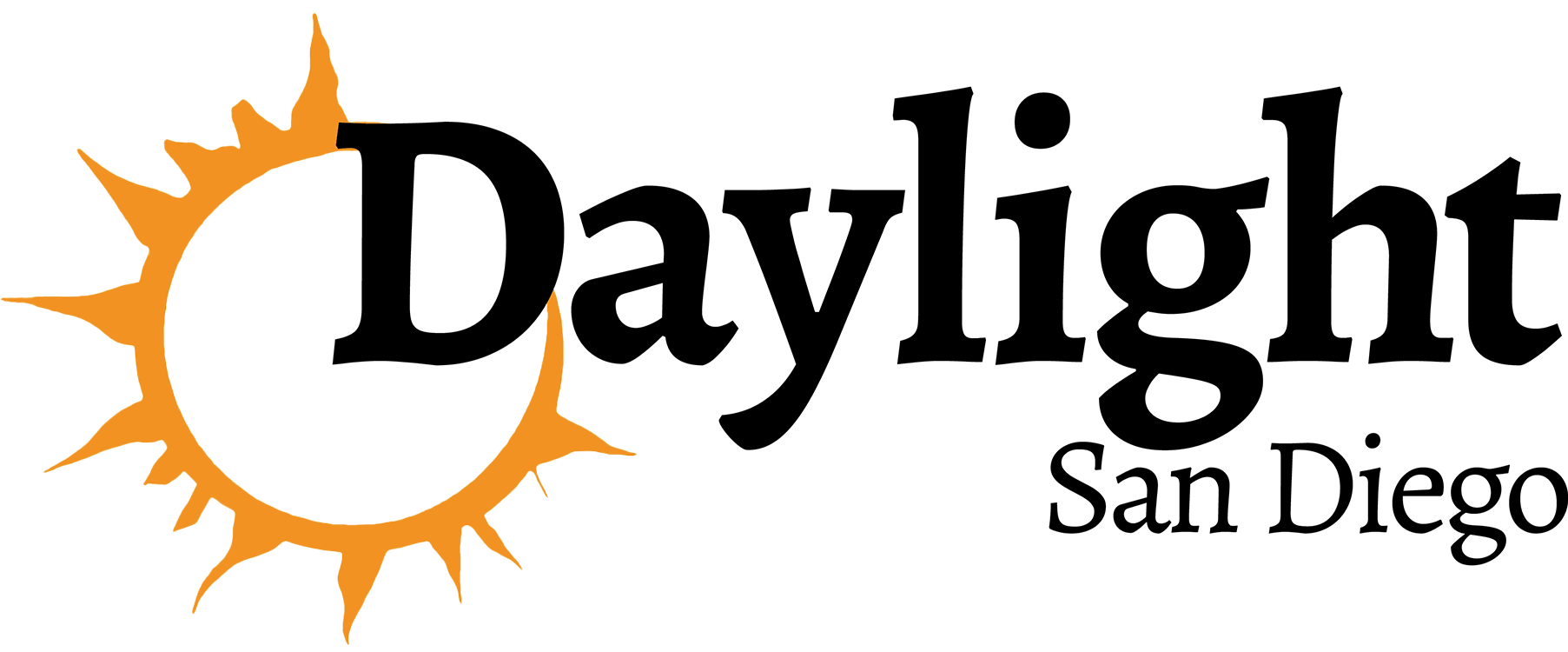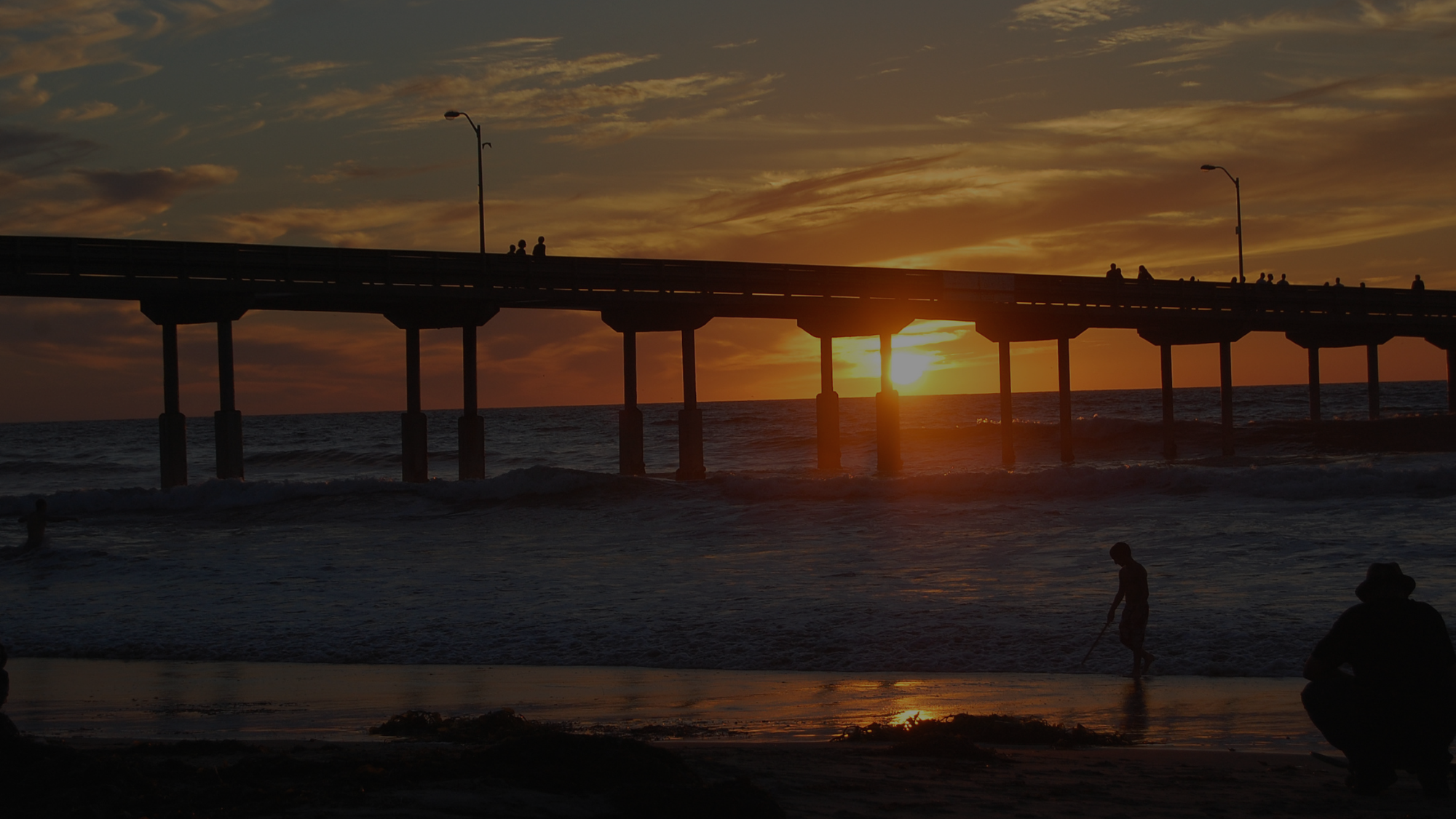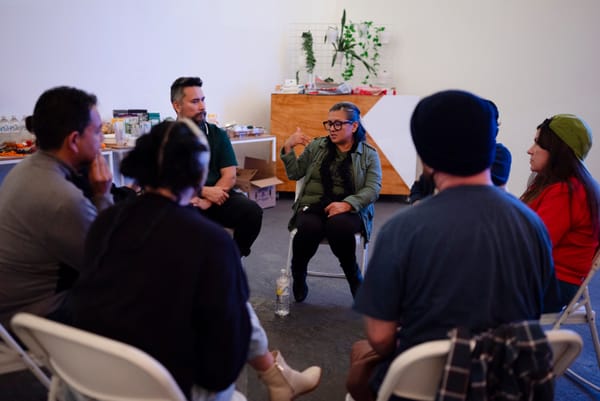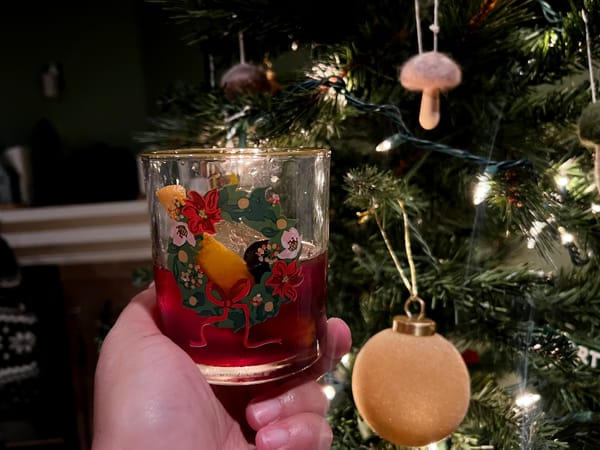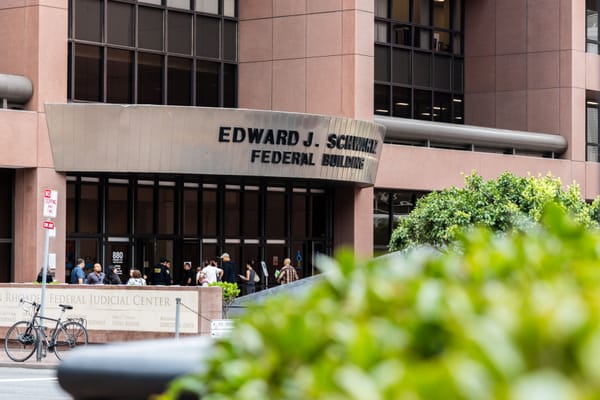AAPI artists make space for creative exploration in San Ysidro chapel turned theater
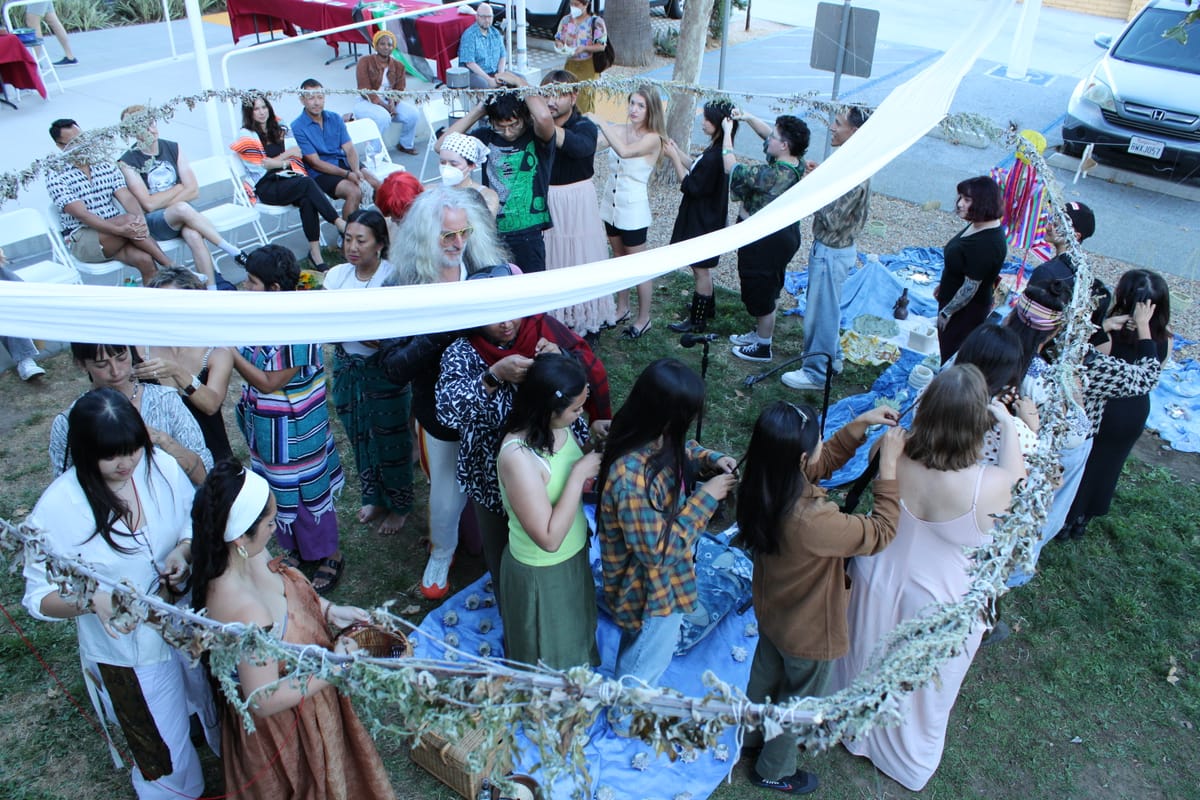
Four fellows with Viet Voices worked across media to connect with audience, the land and themselves.
Written by Sam Barney-Gibbs, Edited by Kate Morrissey
Correction: A photo caption in this story was corrected on Aug. 1, 2025 at 3:26 p.m. to reflect that the photographer was C. Ryu, not Long Nguyen. Daylight San Diego apologizes for the error.
Inside an unassuming, intimate black box theater, Hamsa Fae explained to a packed room how one thread symbolizes unity through diverse art and people.
As art-lovers, San Ysidro natives, and even out-of-state friends lined the seats and leaned on the walls of El Salon, a chapel turned performance space, Fae spoke softly and calmly, introducing the exhibition “the land we carry,” an interactive and multimedia performance art festival showcasing work by nonprofit Viet Voices’s AAPI Emerging Artist Fellowship on Saturday evening.
“We have been diligently gathering for the last four months to produce this exhibition for you all,” Fae said. “All of the performances today, whether they be through video, live performance, through installation, all connect through a red thread that symbolizes our visions, our time and how it braids to create some sort of solidarity.”
Viet Voices chose four artists from across California for the fellowship.
Carmela Prudencio, the executive producer and communications manager for the fellowship, said the lack of prominent spaces in San Diego for Asian American artists upsets them.
Prudencio thinks there's an expectation that Asian American art is often centered in representation politics or a disconnect between two homelands, but the Viet Voices fellowship allows artists to remove that context and put their experiences and artistic wants first.
“As somebody who's been doing a lot of organizing work in Asian American art spaces in San Diego, I've never seen anything with such liberation,” Prudencio said. “I think that this is just the beginning of creating this opportunity for Asian American artists to be themselves.”
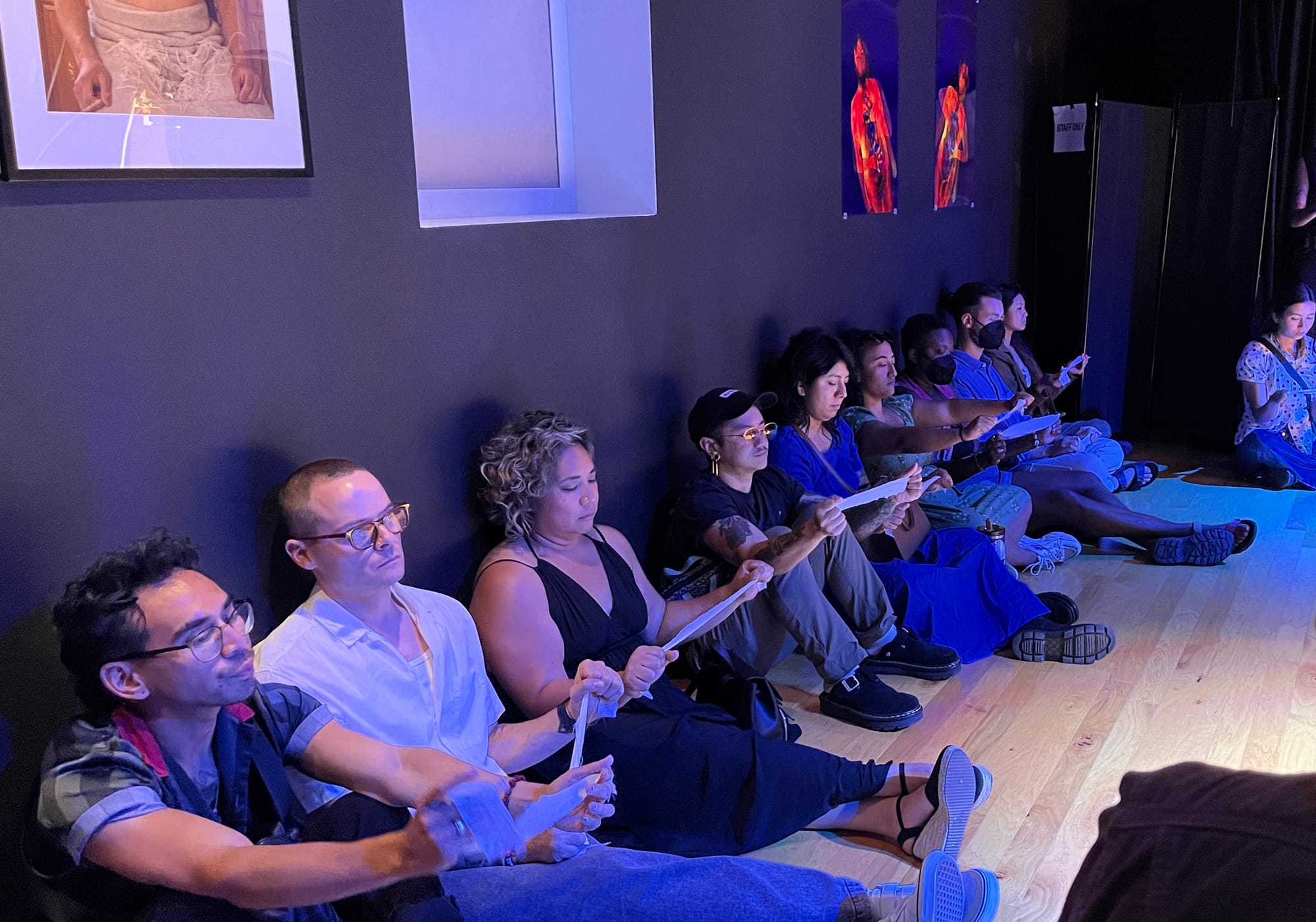
Fae said they intended to create a container where Asian American and Pacific Islander artists can experiment without censorship or pressure from institutional powers, allowing the artists to say what they want to say in the ways they see fit.
They said the event was named “the land we carry” because they wanted to remind people that everyone carries so much that connects the body and mind to land.
“Our body is molded to fit the land,” Fae said. “There's something about our bodies that we carry a geographical location, a bloodline, something cosmic as well. We don't carry just memory or trauma. We carry all the past lives we've had. We carry all the untold stories that haven't been expressed yet.”
They said the exhibition is a space to witness what the artists are carrying emotionally and spiritually. They feel it’s important to re-narrate censored and marginalized AAPI history.
Outside the theater, local vendors donated food for attendees alongside a mutual aid market with profits supporting people in Gaza and immigrants in the United States.
Inside the theater, Long Nguyen’s spotlit photography and multi-colored, multi-materialed face masks adorned the walls.
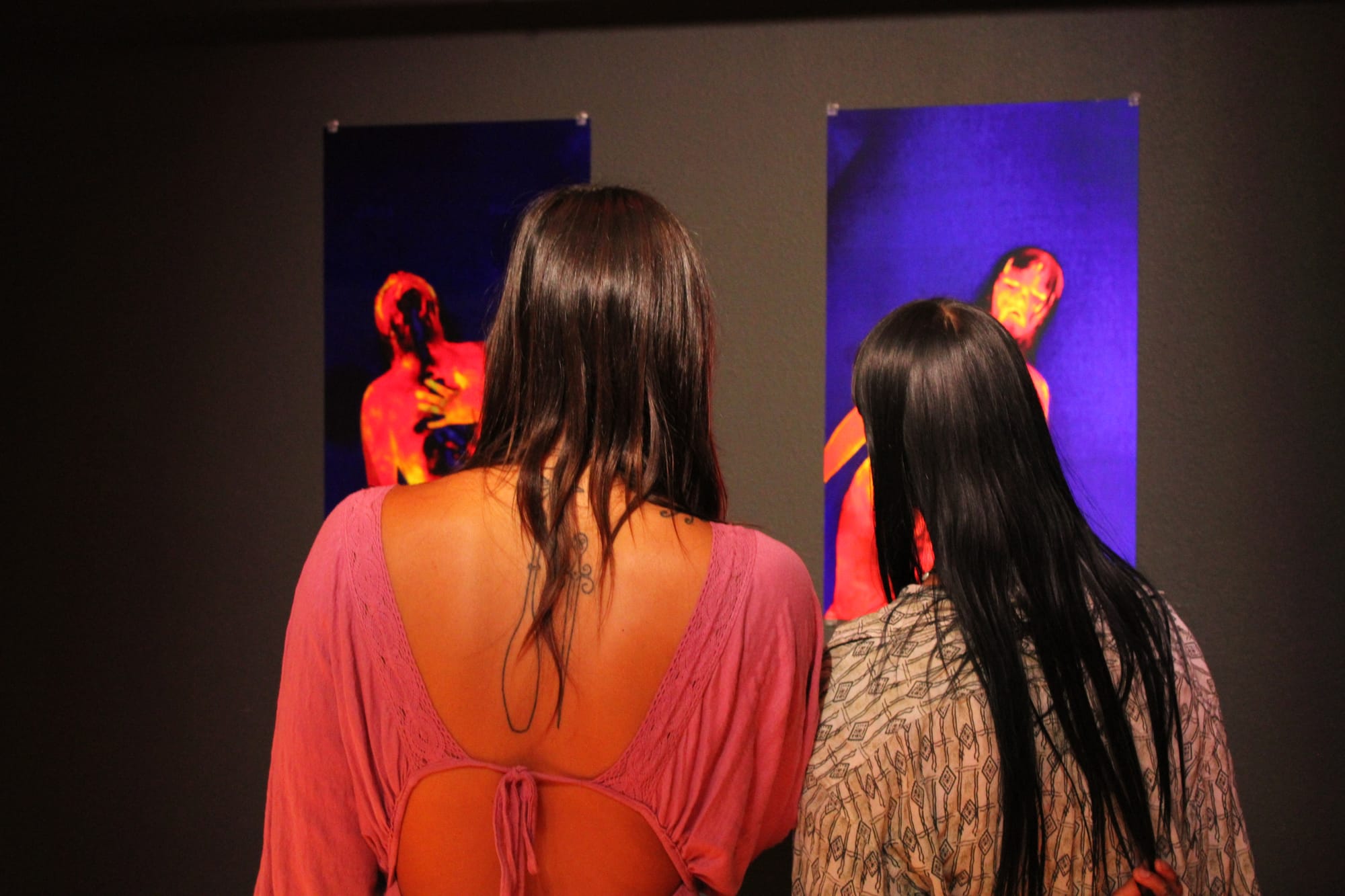
Coming from a makeup background, Nguyen said his art has taken on new meaning since completing the fellowship.
“I learned a lot about my inner world and how to take something that is inside, within me, out to where I can make art out of it,” Nguyen said.
He said through his photography and mask-making, he observes Vietnamese American struggle — how sometimes as immigrants they strip down their complex identities — and how people see them differently.
In a video piece by C. Ryu, unsettling sounds played over footage of the artist dancing with a surveillance camera that was made to look like another person.
Ryu said her video and performance work is a “poetic resistance” to surveillance.
“It is an act to put my nude body in front of something that is meant to surveil me, that is meant to track me and meant to contain me,” Ryu said. “I want to be able to feel like I have control over my image in a world that's told me that my image is not mine.”
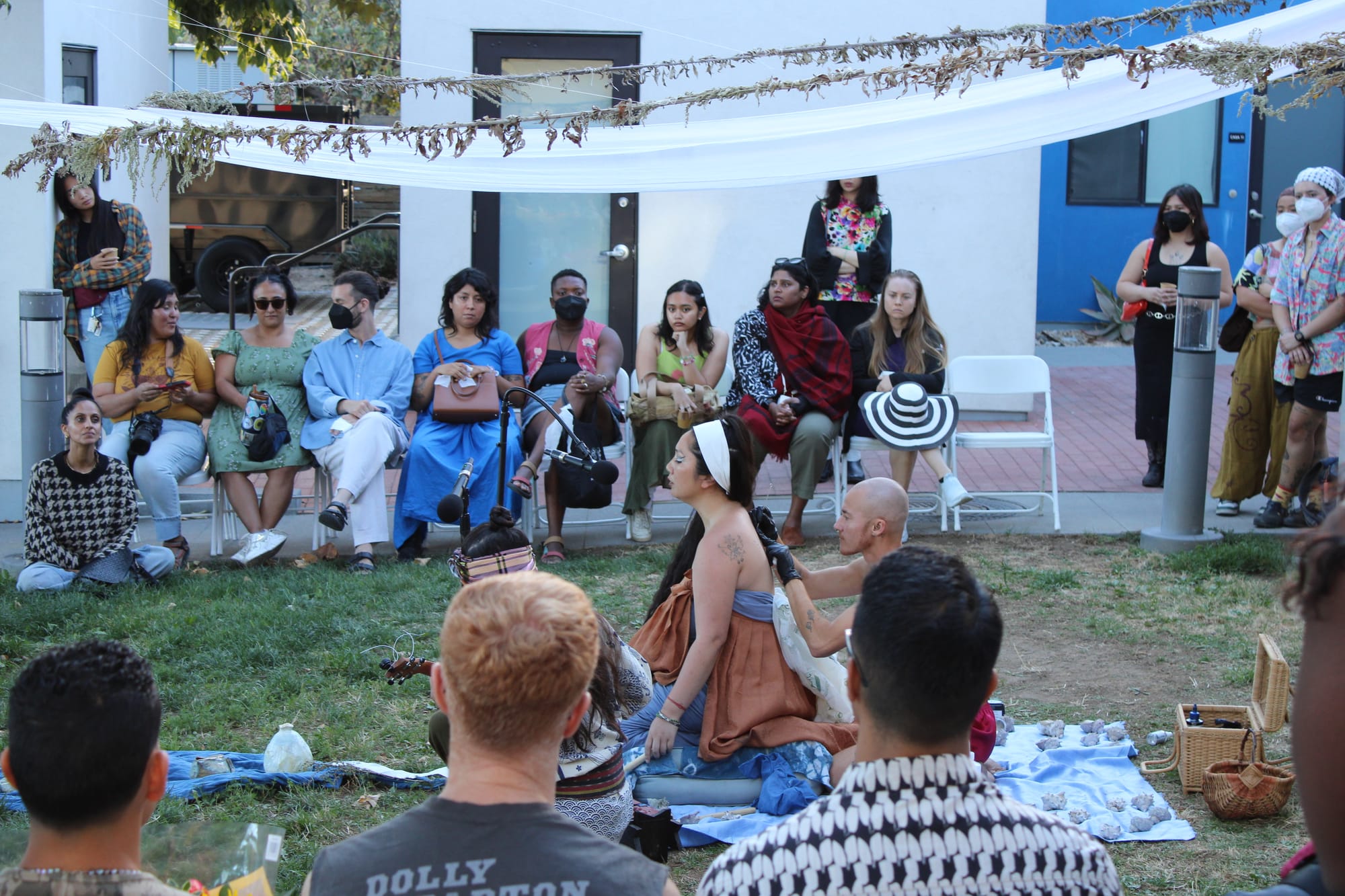
Artist Seh-Reum sang a song highlighting sacrifice and labor, especially through periods of harsh survival, in Jejueo, an Indigenous language of the Jeju Islands, in front of a curated altar dedicated to a deceased loved one of theirs.
“It feels like such an accurate representation of the times that we're living in, where we're being called forward by our ancestors — especially for those of us who either are of diaspora or just had our ways, our languages, taken from us, stolen from us in different ways — this time is calling us forward to help guide us in navigating the chaos and uncertainty of our world in the space of so much extraction and violence of our sacred places,” Seh-Reum said.
After reciting spoken word poetry describing historical censuring of sexuality in traditional Filipino culture, Haven Luya stripped down to a thong that read “f*** ICE” as they caressed their torso and body rolled on top of a human-sized slab of wood engraved with a cross.
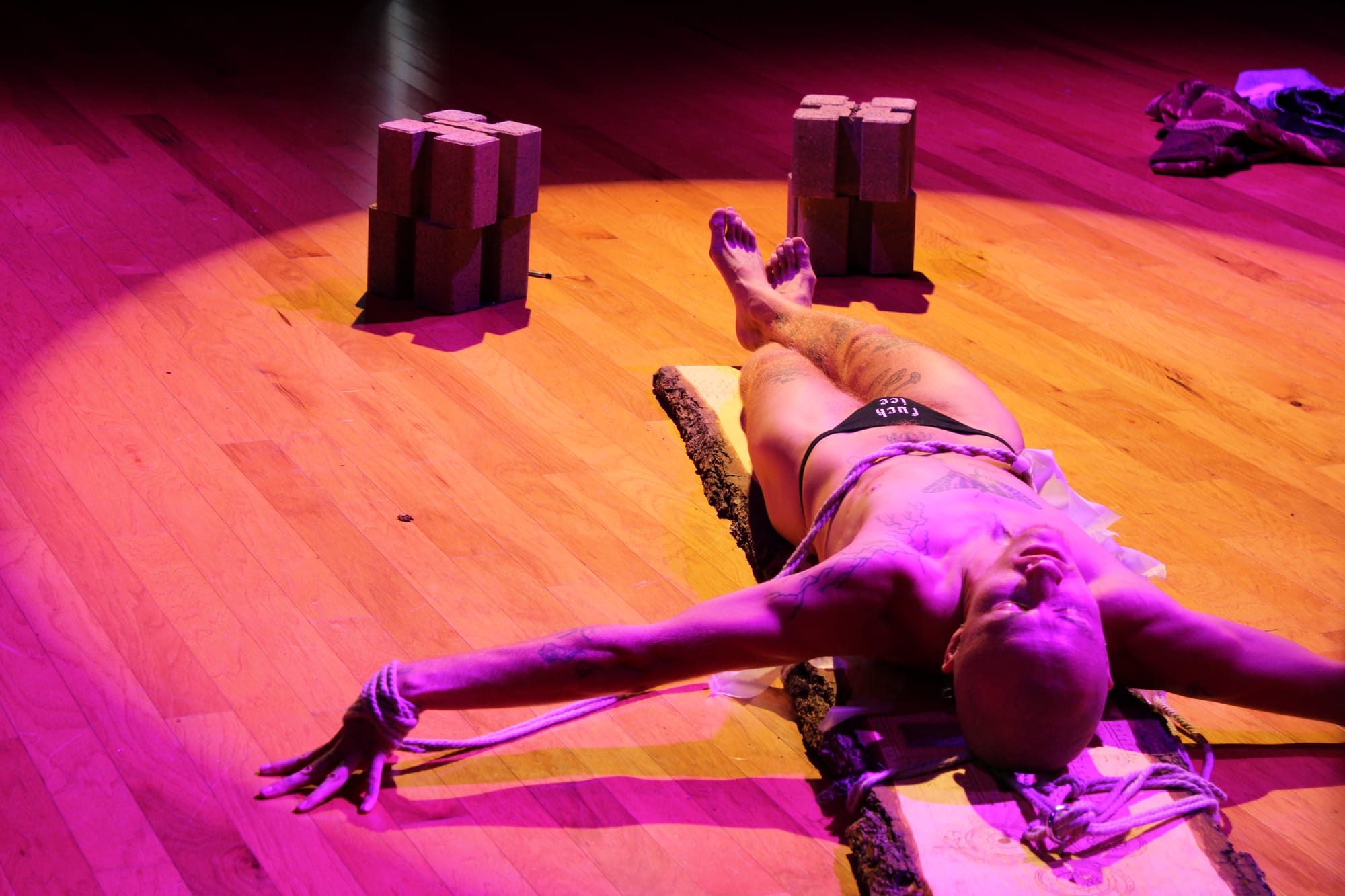
The artists encouraged audience participation and interaction throughout the event — even prior to the exhibition. Attendees sent in voicemails that Luya played during their performance. Once they arrived, attendees received strips of white cloth, only to later be sensually bitten away by Luya during the show.
One of the attendees, Pauline General, said they don’t frequently go to cultural or artistic events — as a full-time student at San Diego State University, they said they’re typically too busy with academic activities. But, as a San Ysidro native, they said they felt drawn to this event and were pleasantly surprised by the diversity of performances.
“I didn't know we were all going outside. I didn't expect it to have that performance workshop factor. I didn't know we were going to be watching videography,” General said. “I think it helps figure out what you're looking for and maybe what you would want to explore.”
Prudencio said this collaborative and immersive effort with the audience was intentional, so the event would not feel transactional.
“That’s a very Western mentality,” Prudencio said. “You feel like you get something, you give something. But really this was a sense of exploration and experimentation for the audience too.”
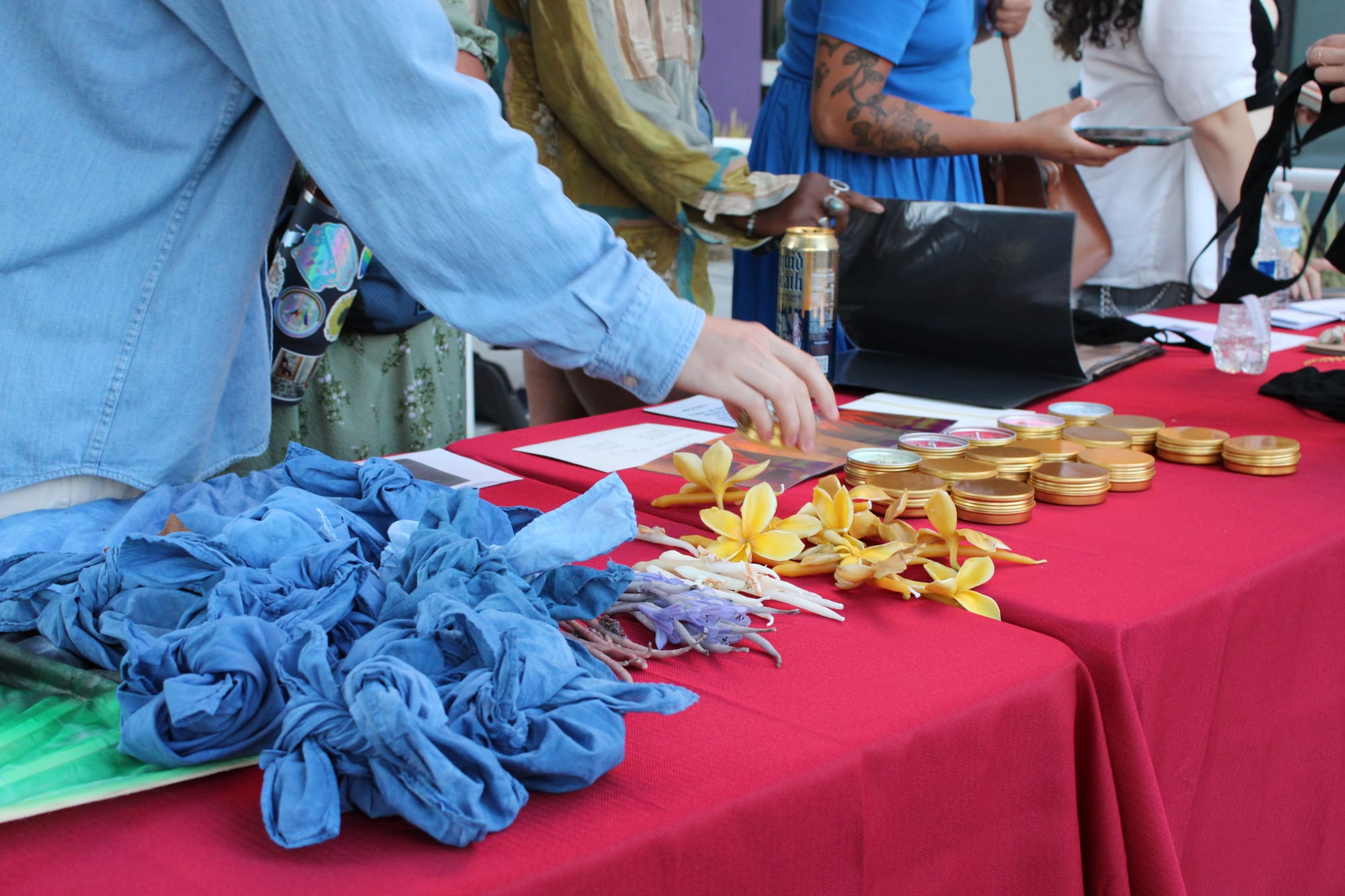
While Prudencio ensured the show ran cohesively and the artists’ needs were met, they also said they worked to connect the artists with the audience and beyond the event.
They said collaboration with Casa Familiar, the organization in charge of El Salon, was organic, and they hope to continue the relationship to expand the reach of arts and culture across San Diego, especially near the border.
“I think the type of art that (Casa Familiar) typically curates is really aligned with the contemporary, often political angle of this identity art that these artists are really honing in on,” Prudencio said. “We wanted to be in a space with a lot more creative freedom…and a space that's not afraid to be political, a space that's not afraid to have our identities be at the forefront.”
Nicole Le, a community organizer in San Diego, said a consistent resistance to feelings of powerlessness can bring joy and hope — and they said they felt this sentiment in the evening exhibition.
“People are resisting everywhere, and that's not going to change,” Le said. “Even if you try to disappear activists, shut us down and repress our voices, there are always going to be people fighting back. I hope that people have also taken that away from this event.”

As light orange clouds could be seen over the mountains just across the border in Mexico, attendees watched as Fae instigated the braiding of thread, inviting the audience to create a “braid spiral.” Dozens of attendees synchronously tended to one another’s hair as a closing ceremony.
“This red thread acts as all of our visions,” Fae said. “We will be creating a braid spiral on this installation — hair as threads of memory, hair as an extension of our soul.”
This moment stood out to General, who said the thread is a symbol of people coming together to better understand one another.
“We're all community, and we all just braid in whatever culture we have,” General said.
